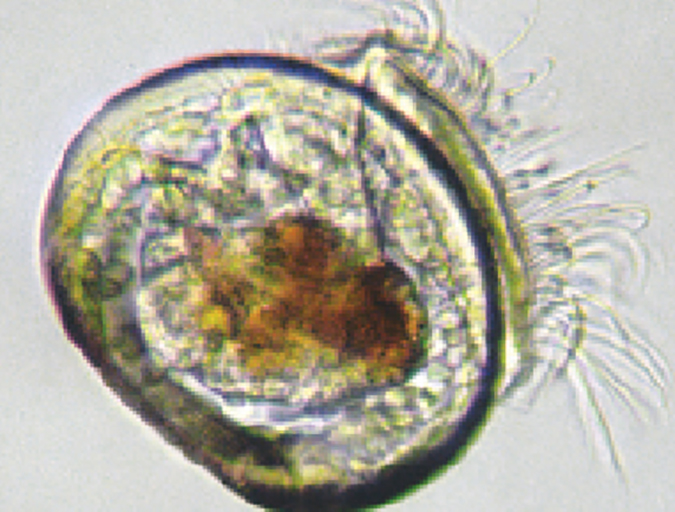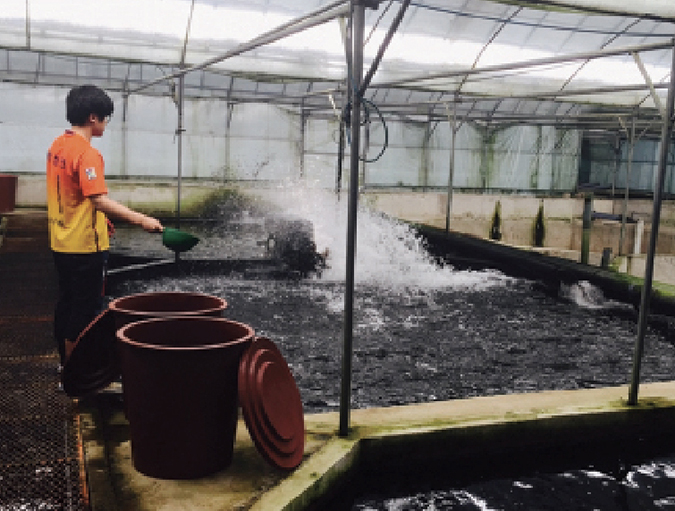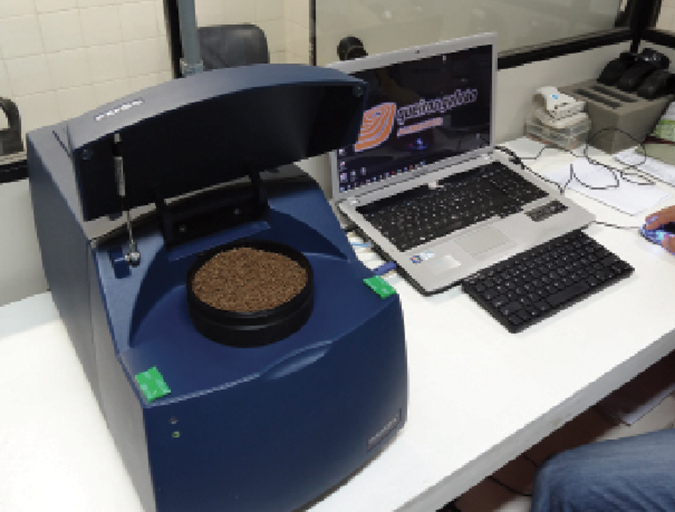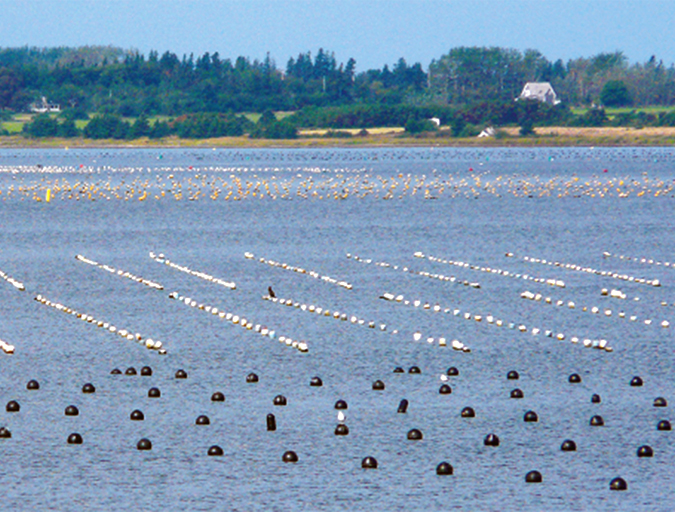Effective use of digestive biology is a goal in aquaculture

Digestion is the mechanical and chemical breakdown of food into its metabolizable parts, which can be used by an organism for energy, growth and/or reproduction. In monogastric animals, which include a wide variety of aquaculture species (for example, salmon, trout, tilapia, seabass and pangasius), much of the chemical breakdown of foodstuffs begins in the stomach through acidification.
Digestive process
In most monogastric animals, once food enters the mouth, it is moistened by saliva, and the digestive process begins. After being swallowed, the food passes down the esophagus into the stomach, where stomach acid and enzymes begin to break it down. The mixture of food and the various intestinal secretions is known as “chyme.” Bile salts stored in the gall bladder and enzymes and alkali secreted by the pancreas mix with the emptied stomach contents in the small intestine, where the stomach acid is neutralized, and most fats are broken down.
The “stomach acid” working in all monogastric animals is hydrochloric acid, a very strong inorganic acid produced by gastric glands (parietal cells). This acid is able to lower the pH in the stomach to levels between 2 and 3, depending on species and diet.
Hydrochloric acid production at birth/hatching is negligible, but increases during the growth of animals. As more acid is produced in the stomach, the pH decreases. Low pH is required for the activation of pepsin, a proteolytic enzyme needed to digest protein. The optimal pH for pepsin activity is 2. At higher levels, its activity is severely reduced.
Implications for aquaculture
What implications does this have for monogastric aquaculture species, which are heavily dependent on high-protein inputs and the proper digestion of these expensive ingredients – especially keeping in mind that diets containing high amounts of proteins tend to buffer the effects of the hydrochloric acid produced by the body?
In 2009, Canadian researchers Carol Bucking and Chris M. Wood looked into the effects of feeding on stomach pH. The authors fed rainbow trout with mean weights of 350 g a commercial feed with 41 percent crude protein at 2 percent body weight ration in a single meal and monitored the resulting pH values in the stomachs of the fish.
Just before feeding, the stomach pH was about 2.7, whereas one hour after feeding, it went significantly up to 4.9. It remained at this level – far above the optimum for pepsin activity – for at least eight hours. The chyme was released into the duodenum eight hours after feeding with pH levels that were far too high.
Buffering capacity
The authors speculated that the buffering capacity of the feed was a major contributor to the increased pH of the gastric fluids. It took the fish more than 24 hours to reach the “low” initial pH of the stomach.
Lorenzo Marquez and fellow researchers also showed the effects of diet buffering on the gastric acidification in juvenile fish in 2011. They found that fishmeal-based diets had buffering capacities 10 times higher than those in diets without fishmeal. The fishmeal diets therefore needed more energy for acid secretion per digestion cycle than test diets without animal protein meals.
Similar observations on feeding and gastric pH were also made by Manuel Yufera and his team in 2011. This Spanish research group fed juvenile gilthead sea bream in three different ways – once, twice or continuously – and monitored the resulting pH levels in the stomachs of the fish.
Feeding was done either at 9 a.m. and 5 p.m. or continuously between 9 a.m. and 9 p.m. The gastric pH values exhibited significant daily rhythms under the different feeding regimes (Figure 1). Only the regime that offered feed continuously allowed the stomach pH to remain in the region of optimal pepsin for a while. This may also be a reason for the significantly greater weight of the fish in that feeding regime. It could be also explained by the higher gastric activity in fish with gastric pH levels below 4.5, as documented by Marquez and colleagues in 2011.

A subsequent study from Yufera’s group in 2012 took this a step further. This time, the authors looked at the connection between stomach pH and pepsin activity in juvenile marine fish. Fish were again fed a single meal, twice or continuously with the same diet at the same times as mentioned above.
Fish fed only once again had stomach pH levels around 4.5, while the highest pepsin activity was actually reported before feeding, with 30 pepsin units/fish. In contrast, continuously fed fish reached a minimum pH in the stomach of about 2.5 and had a resulting pepsin activity of almost 280 units/fish in the late afternoon – clearly demonstrating the impact of low pH on pepsin activation in fish.
Aquaculture applications
Effective use of the digestive biology of fish is of course a goal in aquaculture, so the use of dietary acidifiers has been gaining interest in recent years. However, most of the described effects are thought to stem from the antibacterial action of organic acids, and the impact on protein digestion is often overlooked.
A recent meta-analysis for potassium diformate (KDF) found significantly improved weight gain and feed efficiency for tilapia at levels that can be described as “growth promotion” (Table 1). The final data for that analysis contained the results of eight published studies covering 3,040 fish and comprising 18 trials with KDF inclusion rates from 0.20 to 0.75 percent.
| Dosage | Feed intake | Weight gain (g) | Feed conversion ratio | Fish Productivity Index* |
|---|---|---|---|---|
| 0.41 % | +2.1 | +5.6 | -4.5 | +17.0 |
| Significance | 0.16 | 0.0009 | 0.012 | 0.02 |
The average level of dietary potassium diformate from the data set in all treated fish was 0.4 percent. Only a numerical increase of feed intake (2.1 percent) could be monitored compared to fish without the additive. However, based on final weight, the performance of tilapia was significantly increased by 5.6 percent. Furthermore, the feed-conversion ratios of fish fed KDF were also significantly improved by 4.5 percent.
If calculated using the fish productivity index, the overall improvement amounted to 17.0 percent. These results may not have stemmed only from the well-documented antibacterial effects. Since acidifiers, if chosen properly, have impacts on buffer capacity and/or stomach pH, they also impact the digestion processes in the gastric tract. This was recently confirmed by a study by Egyptian researchers, who found improvements in the protein efficiency ratio and apparent protein digestibility of 10.3 and 6.8 percent, respectively, in tilapia fed with dietary KDF.
Now that you've reached the end of the article ...
… please consider supporting GSA’s mission to advance responsible seafood practices through education, advocacy and third-party assurances. The Advocate aims to document the evolution of responsible seafood practices and share the expansive knowledge of our vast network of contributors.
By becoming a Global Seafood Alliance member, you’re ensuring that all of the pre-competitive work we do through member benefits, resources and events can continue. Individual membership costs just $50 a year.
Not a GSA member? Join us.
Author
-
Christian Lückstädt, Ph.D.
Technical Director
ADDCON
Joseph-Schumpeter-Allee 25
53227 Bonn, Germany
Tagged With
Related Posts

Health & Welfare
Metabolomics approaches to improve mussel larval production
Variability in the quantity and quality of larval yields limit aquaculture growth. New biotechnological advances promise to revolutionize the way we assess and solve bottlenecks. A study demonstrated the use of metabolomics to assess and classify mollusk larvae quality and identify biochemical pathways that may reveal further important insights.

Aquafeeds
Natural feed additives enhance rainbow trout performance
Various additives, many of plant origin, have been explored to replace the use of antibiotics in aquafeed. The authors compared the performance of rainbow trout fed diets containing oxytetracycline or mineral additives yellow loess and Song-Gang stone powder.

Aquafeeds
NIRS technology ensures shrimp feed quality at farm level
Feed plants deal with varied raw materials, formulations and feeds for different animals, which can lead to quality issues and nutrient variations. Near-infrared spectroscopy (NIRS) has been successfully applied in Brazil to ensure feed quality standards at the farm level.

Innovation & Investment
Aquaculture in Canada: status, perspectives
Canada exports farmed seafood products to more than 22 countries and is the main seafood supplier to the U.S. market. Finfish, primarily salmon, production is strong and shellfish production is growing, but diversification will be imperative to maintain competitiveness.



